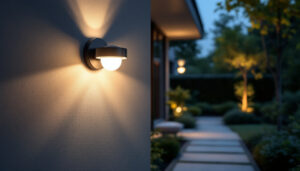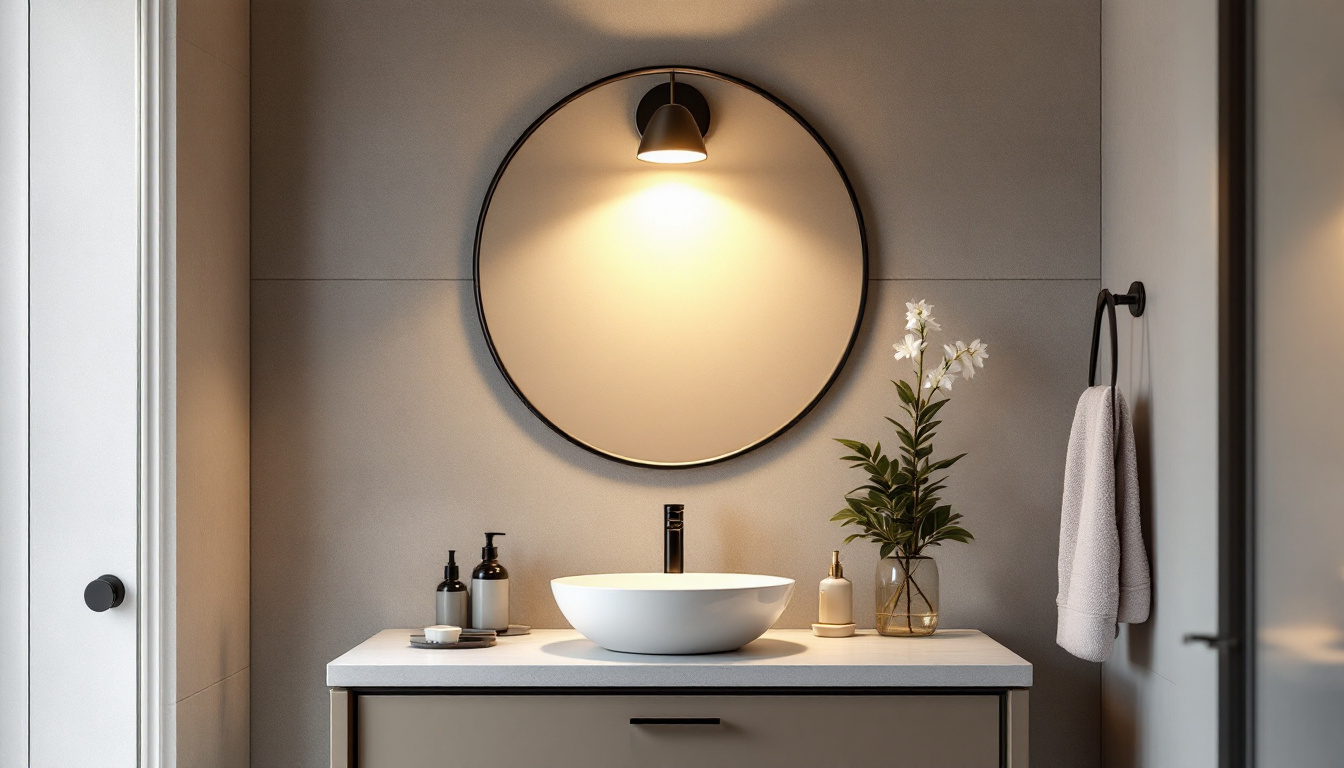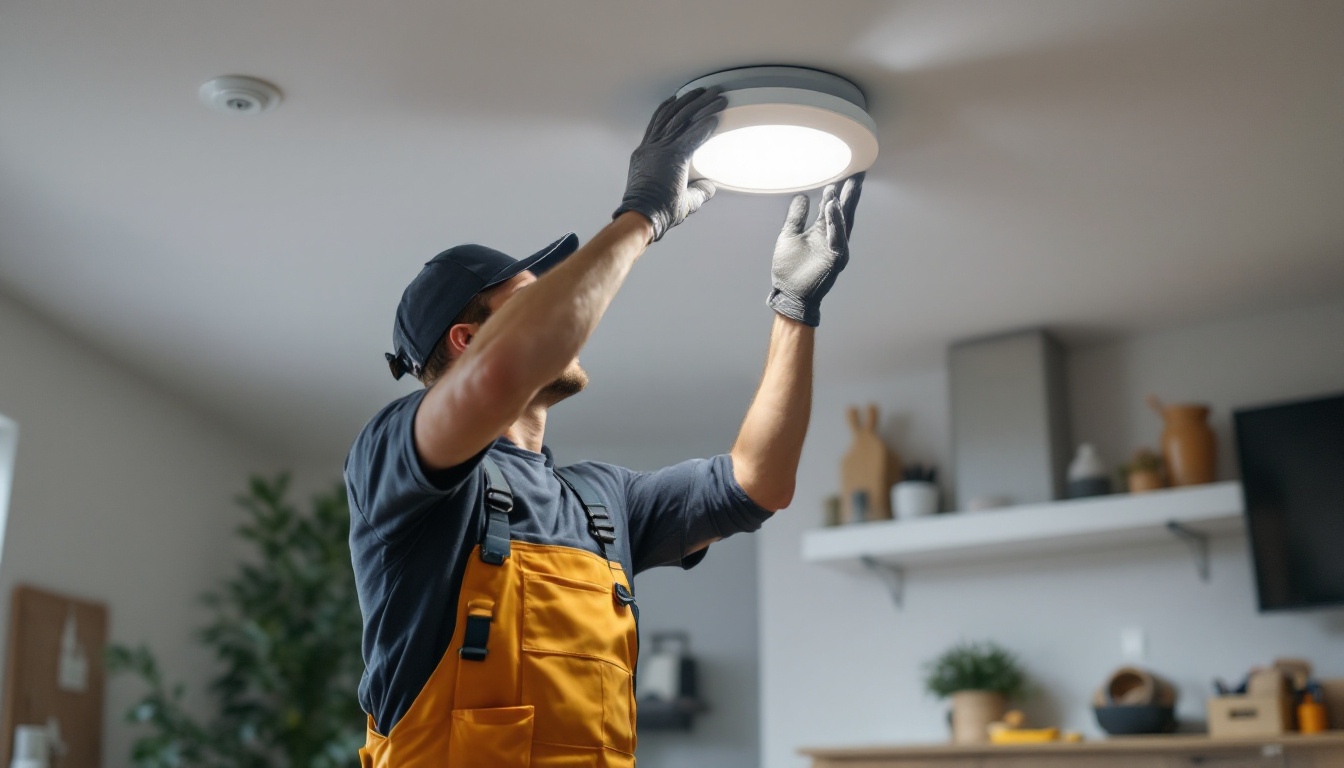

Lighting plays a crucial role in the functionality and aesthetics of any washroom. Among the various lighting fixtures, washroom vanity lights hold a special place, as they are essential for tasks such as grooming and applying makeup. However, many lighting contractors often overlook key aspects when installing these fixtures, leading to common mistakes that can compromise both performance and design.
This article aims to highlight the frequent pitfalls encountered by lighting contractors in the realm of washroom vanity lighting. By understanding these common errors, contractors can enhance their installations, ensuring they meet both client expectations and industry standards.
One of the most significant aspects to consider is the positioning of the vanity lights. Proper placement can dramatically affect the quality of light and the overall ambiance of the washroom. Ideally, lights should be installed at eye level, flanking the mirror to minimize shadows on the face. This positioning not only enhances the functionality of the space but also contributes to a more flattering light, which is particularly important for makeup application. Additionally, the color temperature of the bulbs used can greatly influence how colors appear in the washroom, making it vital to choose bulbs that mimic natural daylight for the most accurate results.
Furthermore, the choice of fixture style and finish can also impact the overall design of the washroom. With a plethora of options available, from sleek modern designs to vintage-inspired fixtures, contractors should consider the existing decor and the preferences of the homeowner. Incorporating dimmable options can also provide versatility, allowing users to adjust the lighting according to their needs, whether for a bright, energetic morning routine or a calming evening soak. By paying attention to these details, contractors can create a washroom space that is not only functional but also visually appealing and tailored to the homeowner’s lifestyle.
One of the most fundamental mistakes made by lighting contractors is selecting the wrong type of fixture for the washroom vanity. There are various styles available, including wall-mounted sconces, overhead fixtures, and integrated LED strips. Each type serves a different purpose and has its own set of advantages.
For example, wall-mounted sconces can provide focused lighting on either side of a mirror, reducing shadows on the face. In contrast, overhead fixtures may cast light downwards, which can create unflattering shadows. Understanding the specific needs of the space is essential for making the right choice. Additionally, the aesthetic of the fixture should complement the overall design of the washroom. A sleek, modern sconce might be perfect for a contemporary bathroom, while a vintage-style fixture could enhance a more traditional decor. The right choice not only enhances functionality but also elevates the visual appeal of the space.
Another frequent oversight is neglecting the importance of lumens when selecting lighting fixtures. Lumens measure the total amount of visible light emitted by a source, and different tasks require varying levels of brightness. For instance, a washroom vanity typically requires between 400 to 800 lumens to ensure adequate illumination for grooming tasks.
Contractors often underestimate the required lumens, leading to dimly lit spaces that can frustrate users. It is crucial to assess the size of the washroom and the specific lighting needs of the vanity area before making a selection. Furthermore, the color temperature of the light, measured in Kelvins, also plays a significant role in how the light is perceived. A warmer light (around 2700K to 3000K) can create a cozy atmosphere, while a cooler light (4000K to 5000K) can mimic daylight, which is often preferable for detailed tasks like shaving or applying makeup. Balancing both lumens and color temperature can lead to a washroom that is not only functional but also inviting and comfortable for daily use.
The placement of vanity lights can significantly impact their effectiveness. A common mistake is installing fixtures at an incorrect height. Ideally, the center of the fixture should be positioned at eye level, which typically ranges from 60 to 65 inches from the floor. This height ensures even illumination across the face, minimizing shadows and enhancing visibility. Properly placed fixtures can also contribute to a more spacious feel in the bathroom, as they help to eliminate dark corners and create a welcoming atmosphere.
Additionally, the positioning of fixtures relative to the mirror is essential. Fixtures placed too far apart or too close can create uneven lighting, leading to discomfort and dissatisfaction. Contractors should carefully consider the dimensions of the mirror and the overall layout of the washroom when determining fixture placement. Furthermore, it’s beneficial to experiment with different styles and types of fixtures, such as sconces or overhead lights, to find the combination that best suits the space and meets the user’s needs. A well-planned lighting scheme not only enhances functionality but also elevates the aesthetic appeal of the bathroom.
natural light can significantly influence the effectiveness of artificial lighting. Many contractors fail to take into account the presence of windows or skylights when planning the lighting design. Natural light can enhance the overall ambiance and reduce the need for excessive artificial lighting during the day. The interplay between natural and artificial light can create a dynamic environment that changes throughout the day, offering different moods and experiences depending on the time.
To create a harmonious lighting environment, contractors should assess how natural light interacts with the space throughout the day. This assessment can help in determining the appropriate brightness and type of fixtures needed to complement the natural light available. For instance, using dimmable fixtures can allow for adjustments as the natural light fades in the evening, ensuring that the bathroom remains a comfortable and functional space. Additionally, incorporating light-colored walls and reflective surfaces can maximize the effect of natural light, further enhancing the overall brightness and warmth of the bathroom, making it a more inviting retreat for daily routines.
Dimming options are often overlooked in washroom vanity lighting designs. The ability to adjust brightness can enhance the functionality of the space, allowing users to create the perfect ambiance for different activities. For instance, brighter lighting may be preferred for grooming tasks, while softer lighting can create a relaxing atmosphere for a soak in the tub.
By neglecting to install dimmer switches, contractors limit the versatility of the lighting design. Integrating dimming options not only improves user experience but can also lead to energy savings in the long run.
In today’s technologically advanced world, many homeowners are opting for smart home systems that allow for remote control of lighting. However, contractors often fail to consider compatibility with these systems when installing washroom vanity lights. This oversight can lead to frustration for users who expect seamless integration with their smart devices.
To avoid this mistake, contractors should stay informed about the latest smart lighting technologies and ensure that the fixtures they select are compatible with these systems. This consideration will not only enhance user satisfaction but also position contractors as knowledgeable professionals in the industry.
Safety should always be a top priority when it comes to electrical installations, particularly in wet areas like washrooms. Many contractors overlook local building codes and safety standards, which can lead to hazardous situations. For instance, fixtures installed too close to water sources can pose a risk of electrical shock.
Contractors must familiarize themselves with local codes regarding the installation of washroom lighting. This knowledge ensures that installations are compliant and safe, protecting both the contractor and the homeowner from potential liabilities.
The choice of bulb type can also impact safety and performance. Many contractors mistakenly opt for incandescent bulbs, which can generate excessive heat and pose a fire risk in enclosed spaces. Instead, energy-efficient options such as LED or CFL bulbs are recommended, as they produce less heat and have a longer lifespan.
Furthermore, selecting the correct bulb for the fixture is essential. Bulbs that are not rated for damp or wet locations can lead to premature failure or safety hazards. Contractors should always verify that the chosen bulbs meet the necessary safety standards for washroom use.
While functionality is crucial, aesthetics should not be overlooked in washroom vanity lighting. Contractors often make the mistake of prioritizing performance over design, leading to fixtures that clash with the overall decor of the space. The right lighting can enhance the visual appeal of the washroom, creating a cohesive and inviting atmosphere.
To avoid this mistake, contractors should take the time to understand the homeowner’s design preferences and the existing decor. Selecting fixtures that complement the style of the washroom, whether it’s modern, traditional, or eclectic, can elevate the overall look and feel of the space.
In addition to matching styles, incorporating decorative elements into the lighting design can add a unique touch. Many contractors overlook the potential of decorative fixtures, opting for standard designs instead. Decorative vanity lights can serve as statement pieces, contributing to the overall character of the washroom.
Contractors should explore various design options, including fixtures with interesting shapes, finishes, and colors. By doing so, they can create a more personalized and visually appealing lighting scheme that resonates with the homeowner’s taste.
In summary, washroom vanity lighting is an essential aspect of any bathroom design, and lighting contractors play a pivotal role in ensuring its success. By avoiding common mistakes such as selecting the wrong fixtures, improper placement, neglecting dimming options, and overlooking safety standards, contractors can significantly enhance their installations.
Furthermore, considering aesthetics and the integration of smart technology can elevate the user experience, making the washroom not only functional but also a space of comfort and style. By being mindful of these common pitfalls, lighting contractors can establish themselves as trusted professionals in the industry, delivering exceptional results that meet the diverse needs of their clients.
Ready to avoid common vanity lighting mistakes and elevate your installations? Choose LumenWholesale for spec-grade lighting products that combine quality, affordability, and convenience. With our unbeatable wholesale prices and hassle-free bulk buying, you can ensure every washroom shines without the burden of inflated markups. Plus, with free shipping, you get the best value for your investment. Don’t compromise on performance or price. Discover wholesale lighting at the best value today and light up your projects with confidence.

Discover essential tips and common pitfalls for lighting contractors working with solar outside lights.

Discover the insider tips and expert techniques lighting contractors use to flawlessly replace recessed lights.

Discover essential insights into work light solutions that every lighting contractor should know.

Discover essential best practices for lighting contractors when it comes to appliance plugs.
Get notified when NEW deals are released.
Optimize your budget with wholesale discounts.
Only top-quality, specification-grade lighting products.
No additional costs at checkout - what you see is what you pay.
We understand the unique needs of contractors.